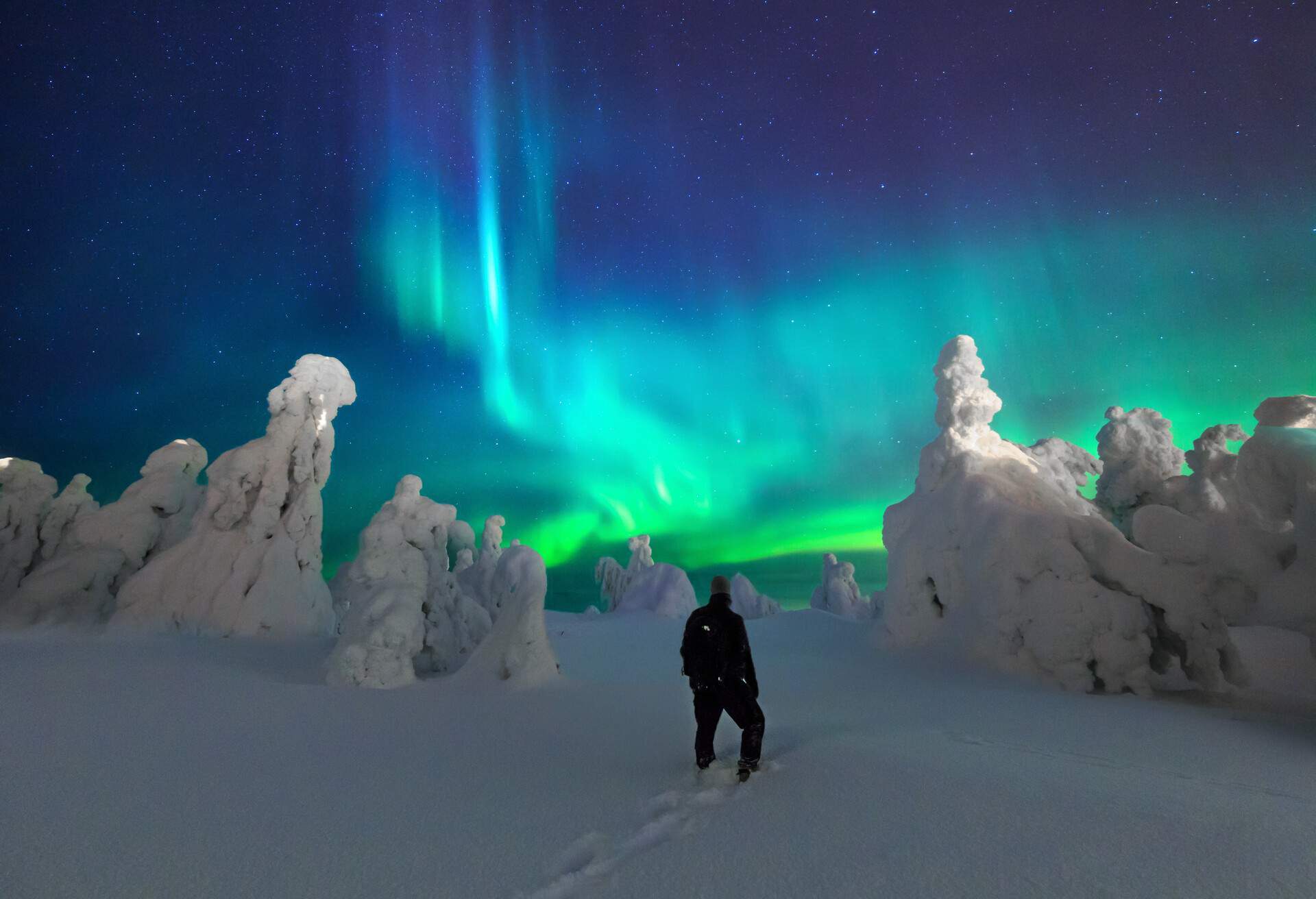Stargazers, assemble: 2024 is officially the year of astrotourism. With 4 can’t-miss meteor showers on the horizon, now’s the time to start planning your next stellar side quest. Here’s everything you need to show up for the showers—including where to go, when to book and how to prep.
But first—in case you didn't know—a meteor shower occurs when a swarm of meteors appears to radiate from a single point in the night sky. This happens when streams of cosmic debris—what we call meteoroids—enter the earth’s atmosphere at lightning speed on parallel trajectories. Only when they enter the earth’s atmosphere do they become meteors.
When should I book to see a meteor shower?
As astrotourism’s popularity spikes skyward, so do bookings (and prices) for cosmic-related attractions. In particular, campsites with limited plots in stargazing hot spots can get booked up three to four months in advance, so it’s worth planning and booking as early as you can.
Luckily, the night sky is generous and there are awesome meteor showers throughout the year, giving you plenty of options at home and abroad. Here’s when to book for the biggest ones—for everything else, the general rule of thumb is to reserve at least two months in advance.
The Leonids
Book from: August to September
Famed for their brightness and long, persistent tails (or trains), the Leonids typically deliver around 10 to 15 shooting stars an hour. Active between the 3rd of November and the 2nd of December, in 2024 they’ll peak between the 17th and 18th of November.
The Geminids
Book from: August to September
Powerful and consistent, the Geminids meteor shower lives up to its name with up to 130 to 140 meteors per hour in a clear sky. Taking place from the 19th of November to the 24th of December, they will peak in 2024 on the 13th and 14th of December.
The Quadrantids
Book from: September to October
One of the strongest and most consistent meteor showers, the Quadrantids are active and visible between the 28th of December and the 12th of January. They’ll peak next on the 3rd of January, 2025.
The Perseids
Book from: February to March
These are the best known and most watched of all meteor showers which means you should book extra early. Running from mid-July until the end of August, the Perseids meteor shower peaks in mid-August.
The best places to see meteor showers in North America
The US and Canada are chock full of meteor shower watchpoints—the best being Dark Sky Parks, where light pollution is kept to an absolute minimum. Of the 125 DSPs around the world, 90 are in North America, with 50 located in the southwest of the US. If you’re camping in a state or national park, make sure you’ve got the necessary permits before you go.
Death Valley National Park, California
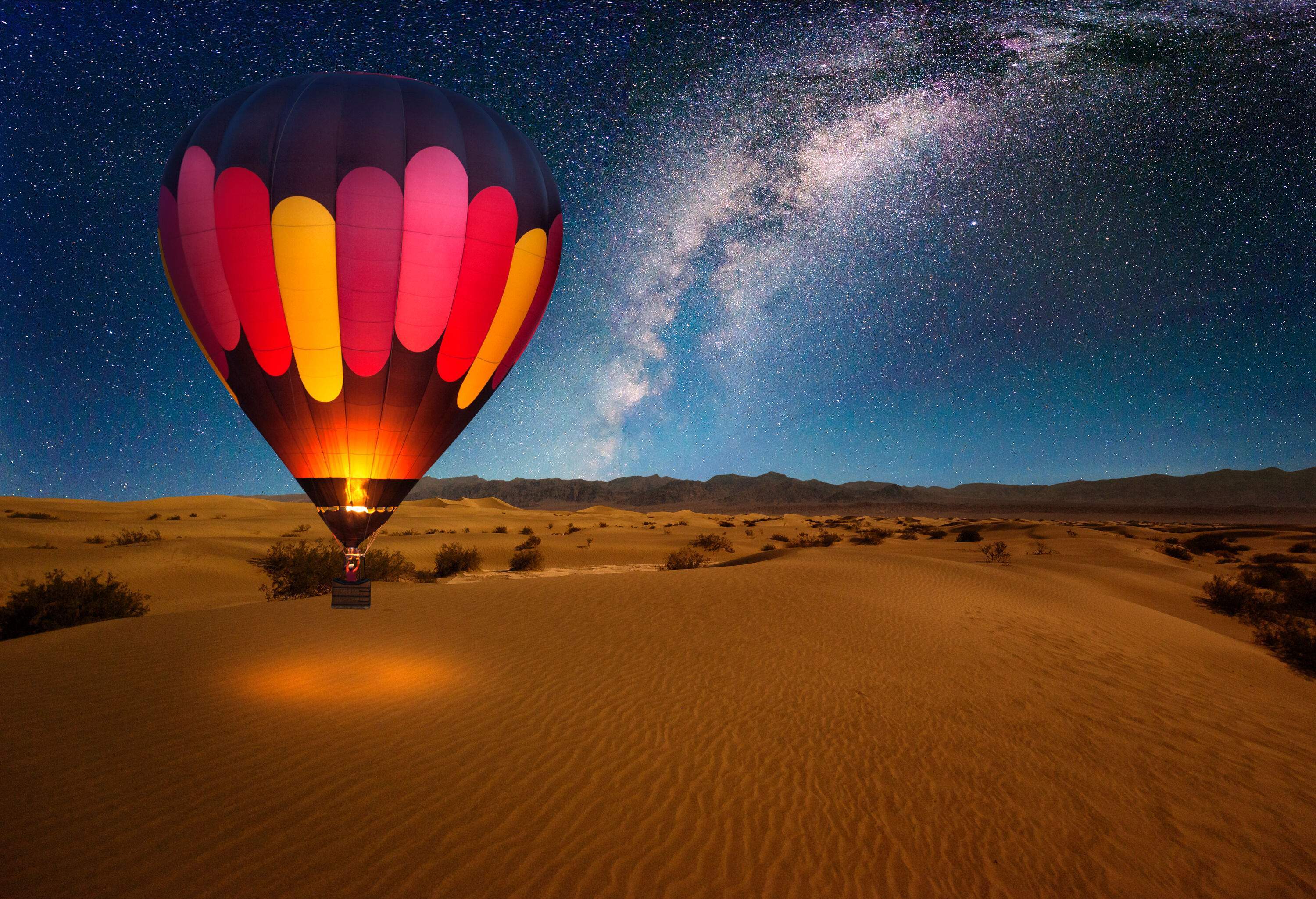
The largest US national park outside of Alaska, Death Valley is the ideal place to see multiple meteor showers. All you need to do is your camping spot. For cold, clear viewing conditions, the Quadrantids in January are unmatched. Or opt for a springier setting by sitting in on the Lyrids, taking place 16–25 April.
In August, temperatures rise to red hot and many campgrounds close as the Perseids showers take over. While there are plenty of developed campgrounds, we suggest posting up in a more primitive location like Thorndike.
Cherry Springs State Park, Pennsylvania
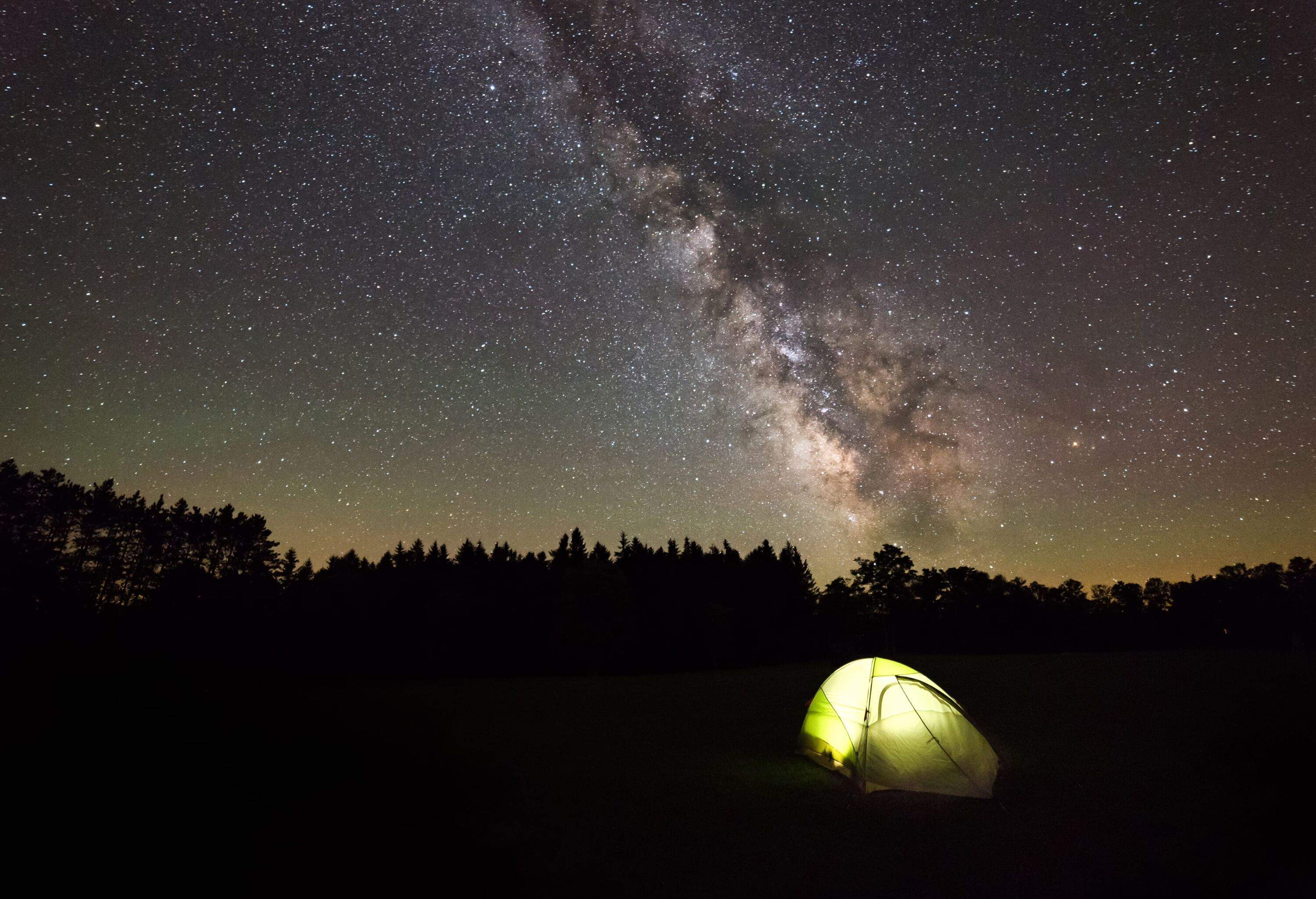
Famed for its crystal clear views of the Milky Way and typically hard-to-see astronomical phenomena, Cherry Springs State Park is a Dark Skies hotspot. It even has a dedicated Overnight Astronomy Observation Field. Its 82 acres are surrounded by the 262,000-acre Susquehannock State Forest, cut through by the 135-kilometre long Susquehannock hiking Trail. Calling it remote is an understatement.
Visit the Night Sky Public Viewing Area in August and enjoy the Perseids meteor show complete with free stargazing programs and events. Peaking the 20th to 21st of October, the Orionid meteor shower is a byproduct of Halley’s Comet.
Big Bend National Park, Texas
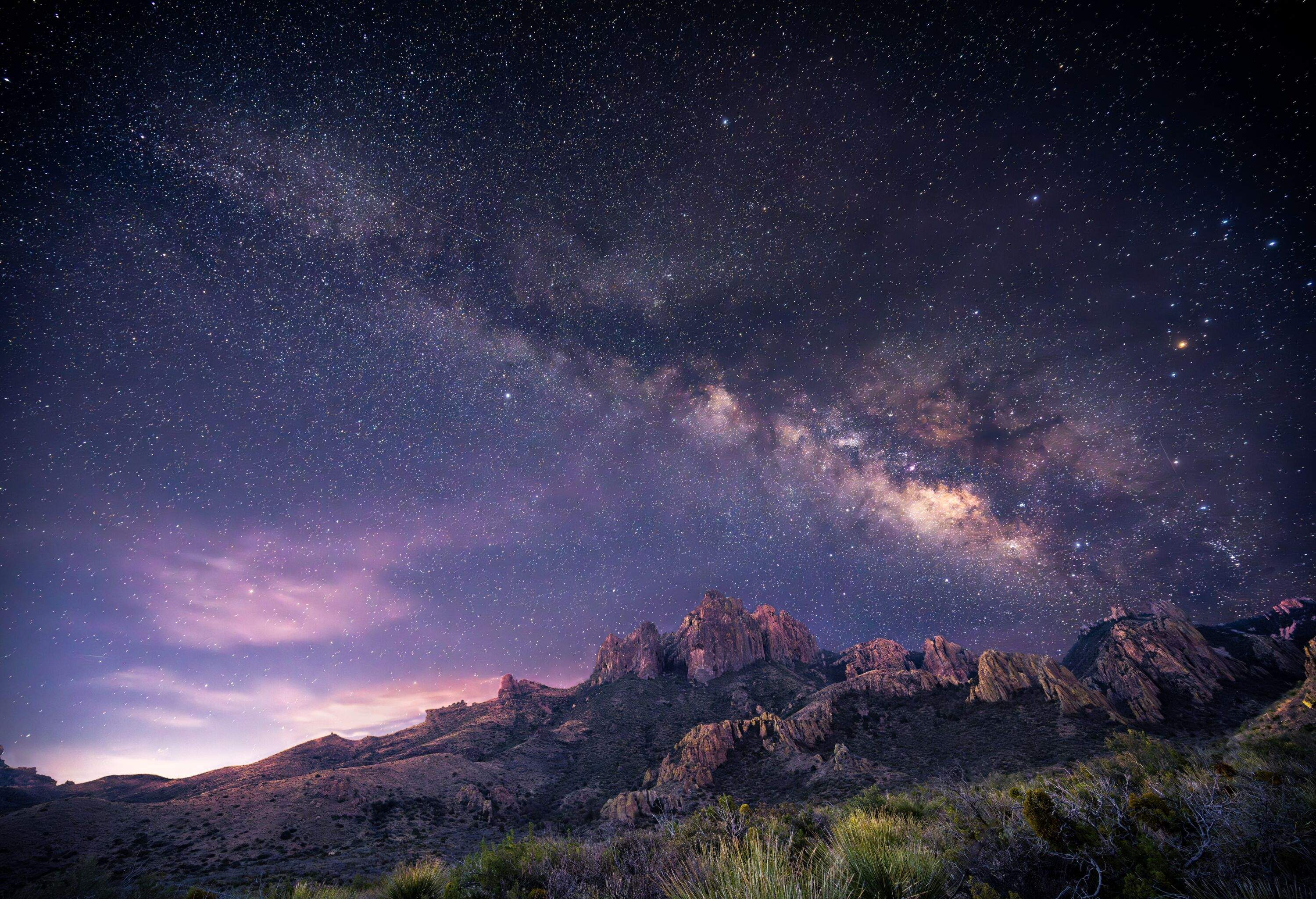
Big Bend in Texas enjoys the least light pollution of any other national park in the lower 48 US states, primarily due to its scarcity of population. Its 67 primitive campsites set along hundreds of kilometres of backcountry roads are hard to reach but rewarding when you do. While you’ll have to pay to enter the park, there are free night sky programs and star parties to enjoy.
The August Perseids are the annual star of the show. But in 2024, the lesser known Ursids will peak around the 22nd to 23rd of December, with a new moon arriving on the 23rd of December, which means visibility should be particularly good.
Terra Nova National Park, Newfoundland and Labrador
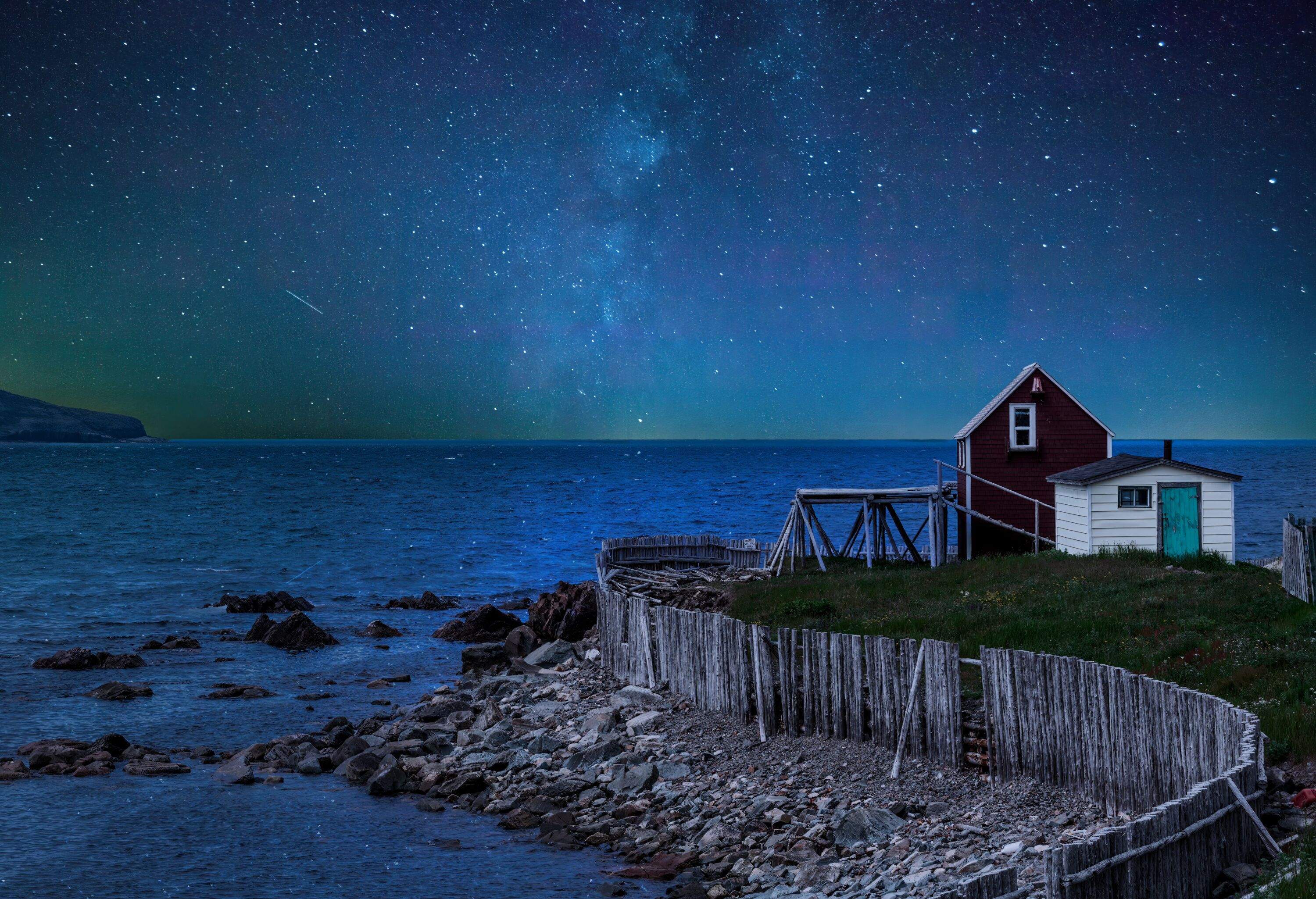
On the far eastern coast of our own Canada, Terra Nova is singularly well suited to meteor viewing. Its extraordinary coastal location leads to ink black skies, thriving nocturnal wildlife and the chance to watch meteor showers as Newfoundland’s earliest residents did.
Compact and accessible, its two main campgrounds and seven backcountry locations are flooded in darkness. Beachy Pond is particularly remote, accessible only by canoe, but Sandy Pond is rated as having the darkest skies in the whole park. Don’t bypass the visitor centre though—the reflections of meteors on the glassy surface of Newman Sound have to be seen to be believed.
Whiteshell Provincial Park, Manitoba
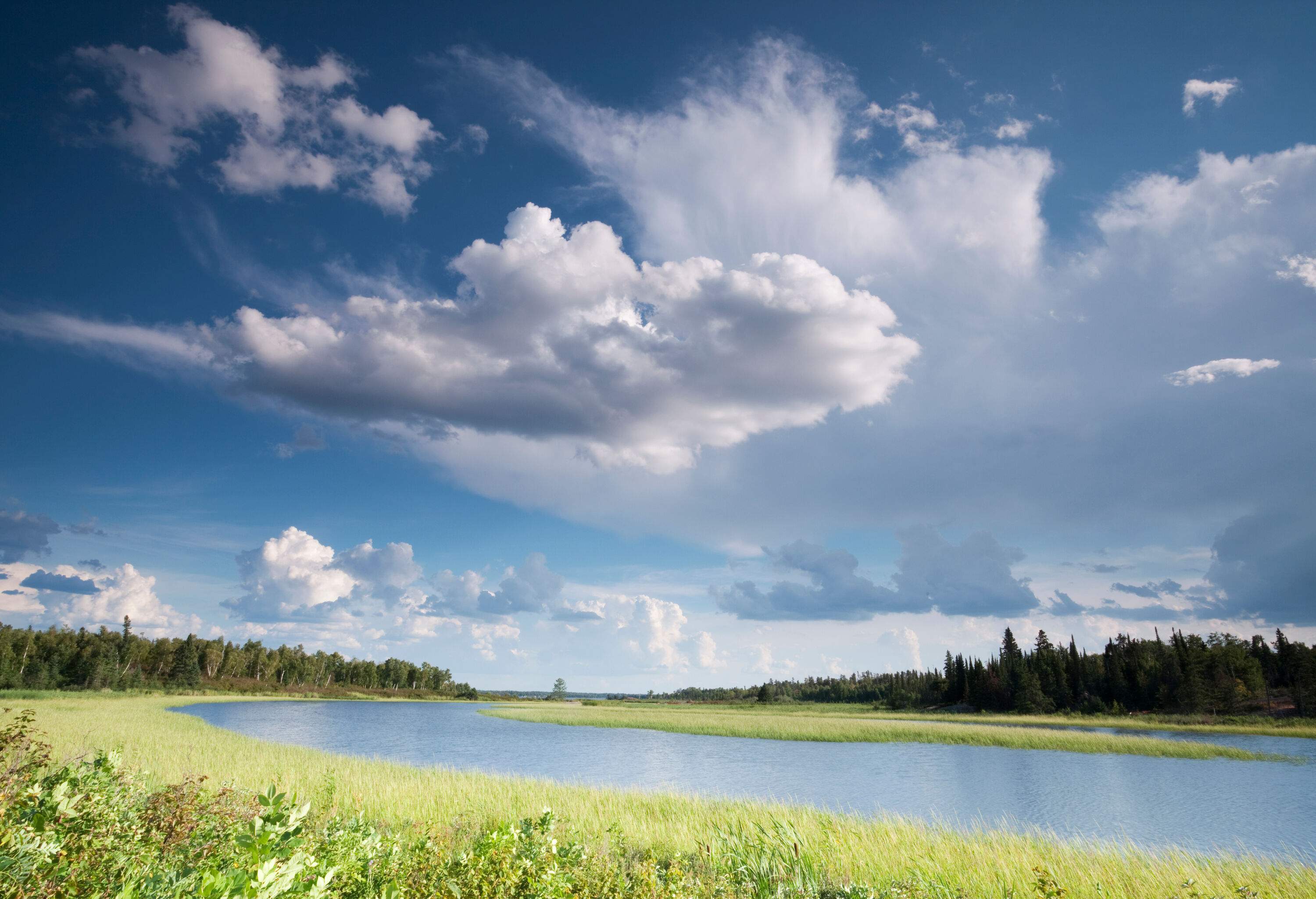
Only a couple of hours from Winnipeg on the border with Ontario, Whiteshell Provincial Park isn’t an official Dark Sky Preserve, but is no less spectacular. West Hawk Lake lies at the heart of its meteor watching community, and with good reason: it was formed in a crater created by a meteor strike.
And if you visit in mid-July, you can take part in the annual West Hawk Meteor Fest's lively atmosphere, celebrating all things celestial and the start of the annual Perseids meteor shower.
The best places to look for meteor showers around the world
Beyond the borders of North America, there are many stargazing destinations almost as spectacular as the skies they reside under. Alongside the dedicated dark sky parks, search out rural areas far from cities and towns. Deserts, forests, mountains and coastlines offer rich pickings, usually with budget accommodations, extraordinary landscapes and few people to pollute the darkness that engulfs them.
Aoraki Mackenzie International Dark Sky Reserve, New Zealand
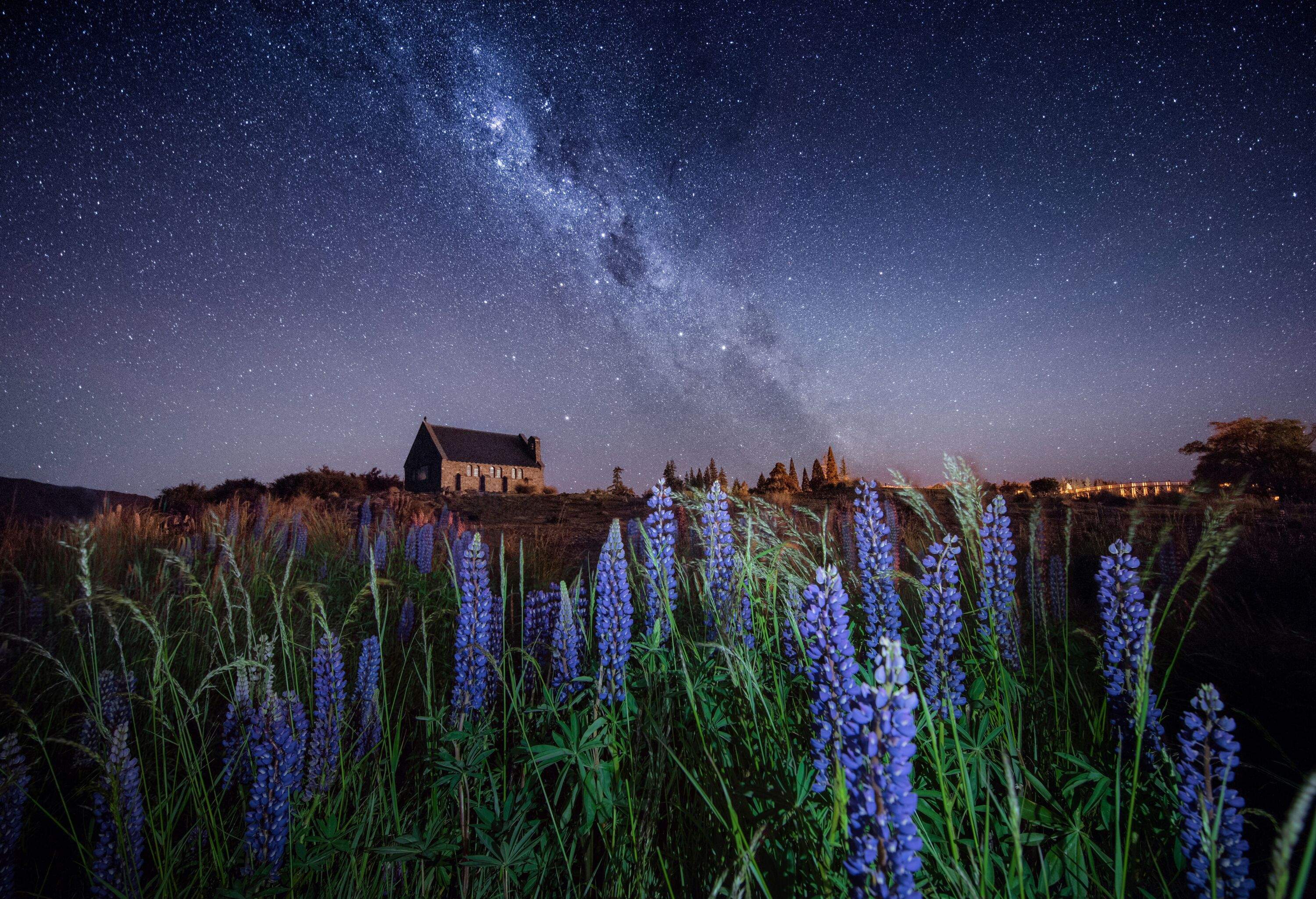
On the opposite side of the world, New Zealand is rightly renowned for its year-round stargazing. It’s also home to the Southern Hemisphere’s largest reserve in the Aoraki Mackenzie International Dark Sky Reserve on the South Island.
Among its best celestial shows are the Eta Aquariids, active from mid April to mid May, and the mid-December Geminids. Book a budget-friendly stay in Tekapo for easy access to Lake Tekapo in the heart of the reserve.
Namib Desert, Namibia
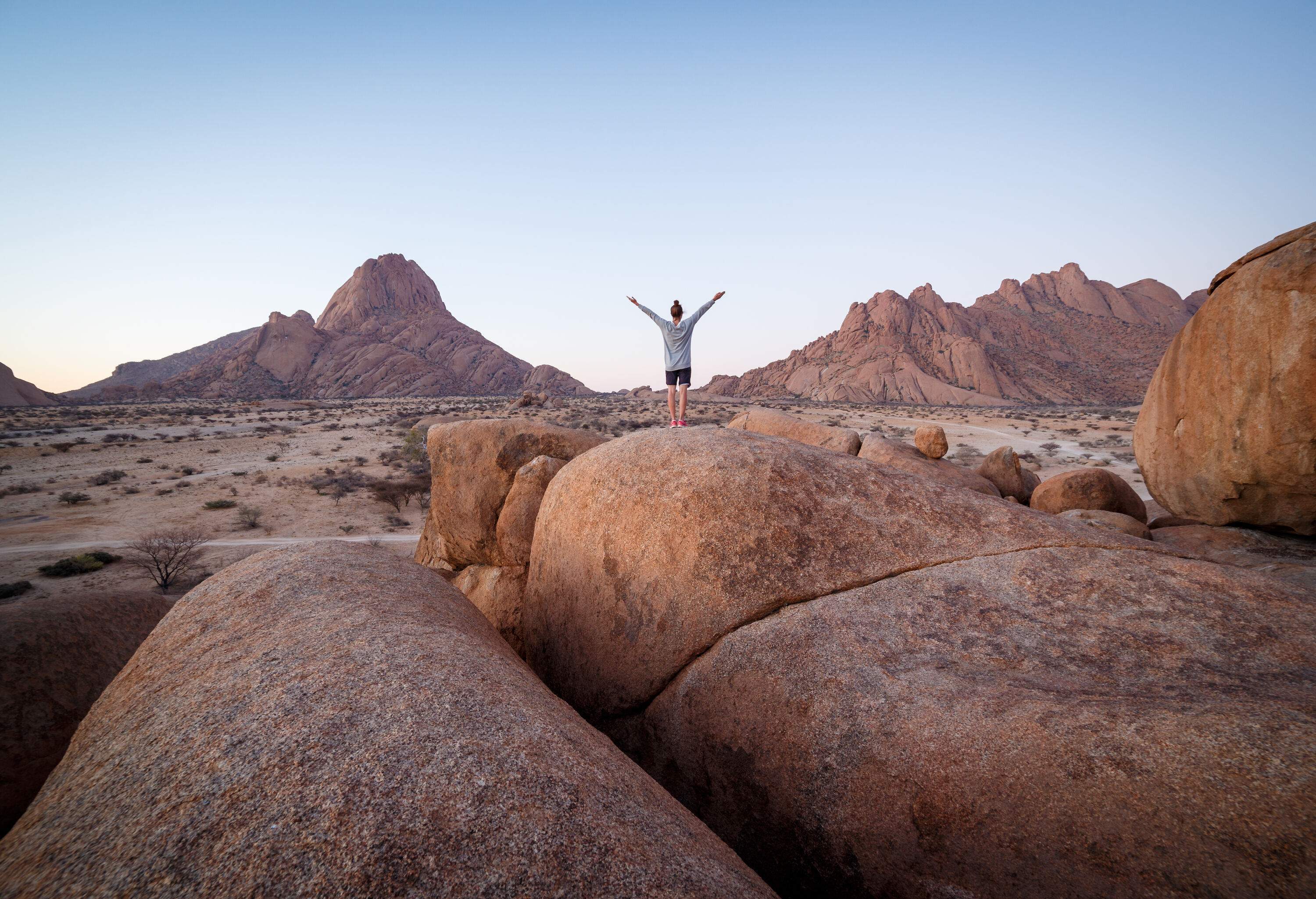
Stretching for more than 1,900 kilometres along the Atlantic coasts of Angola, Namibia, and northwest South Africa, the Namib Desert is vast. It’s also unpopulated, unfailingly dark and lit with meteor showers for much of the year.
The best time to visit is between July and October when temperatures are warm and skies mostly clear. That makes it one of the best places in the world to watch the Perseids meteor shower, which peaks in August. You’ll find plenty of budget lodges and camping options deep in the desert.
Kerry International Dark Sky Reserve, Ireland
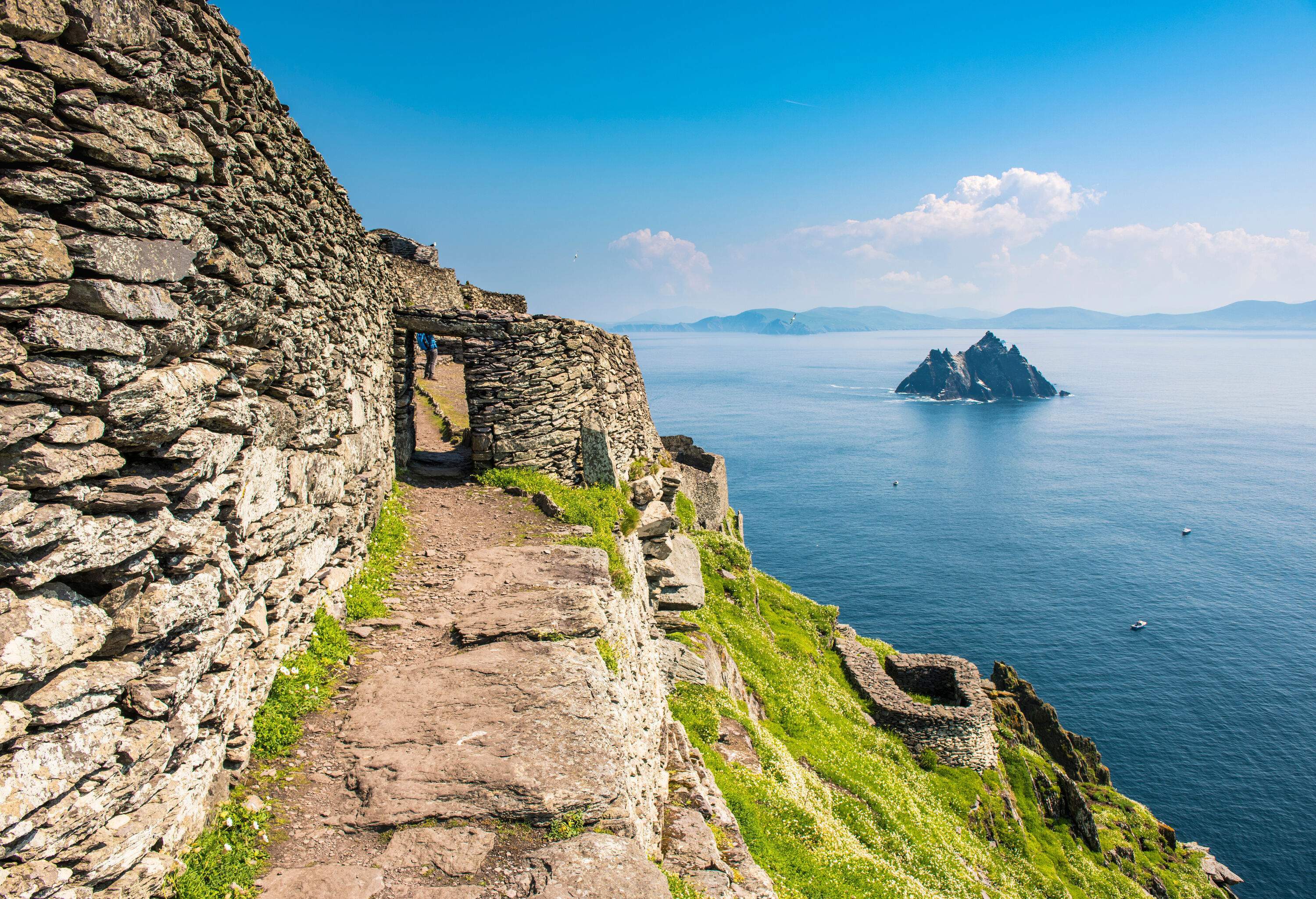
In an unlit corner of southwestern Ireland, remote County Kerry is home to some of the best meteor shower shows in Europe. Free and open year round, the reserve is wonderful for viewing the Perseids and Geminids, but it’s the Lyrids that really shine.
Lighting the skies from the 16th to 25th of April every year, the Lyrids peak from late evening on the 21st of April into the dawn of the 22nd in 2025. Spring is a great time to visit either way, as the annual Skellig Coast Dark Sky Festival celebrates all things celestial. In 2025, it runs from the 28th to 30th of March.
Korčula, Croatia
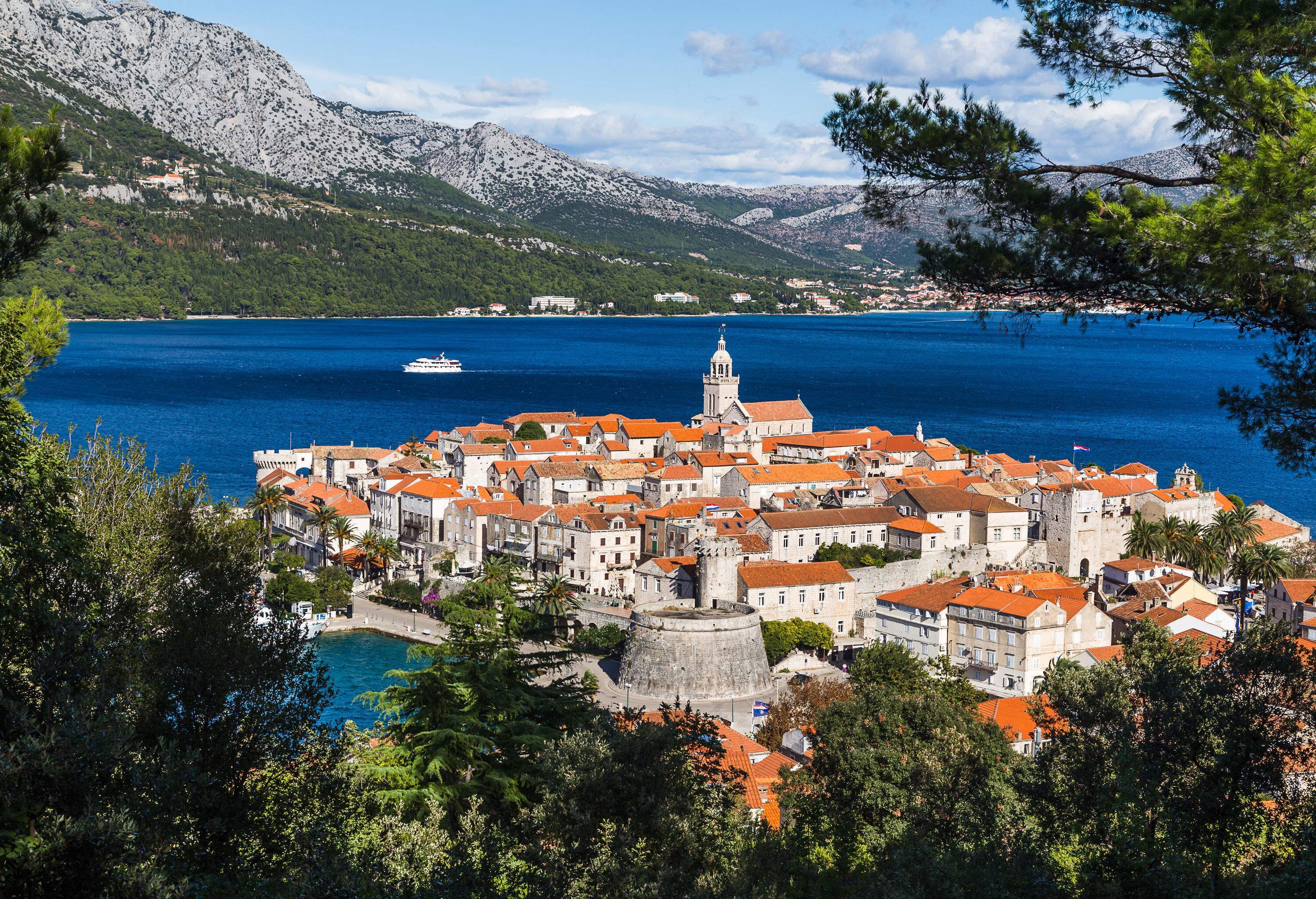
Croatia is proof you don’t need to seek a registered dark sky reserve to see meteor showers. Bypass the stargazing hotspot on Hvar and head instead for tiny, picturesque Korčula on the Dalmation coast.
Blessed with very little light pollution and great elevation, it’s the perfect balance of culture, beach and stars without the discomforts of camping. Book a budget room locally and dine on gorgeous seafood during the day. At night, head to deserted beaches and empty hiking trails for ultra convenient stargazing. With consistently clear spring and summer skies, the Lyrids and Perseids meteor showers are your best bet for a celestial show to remember.
The Azores, Portugal
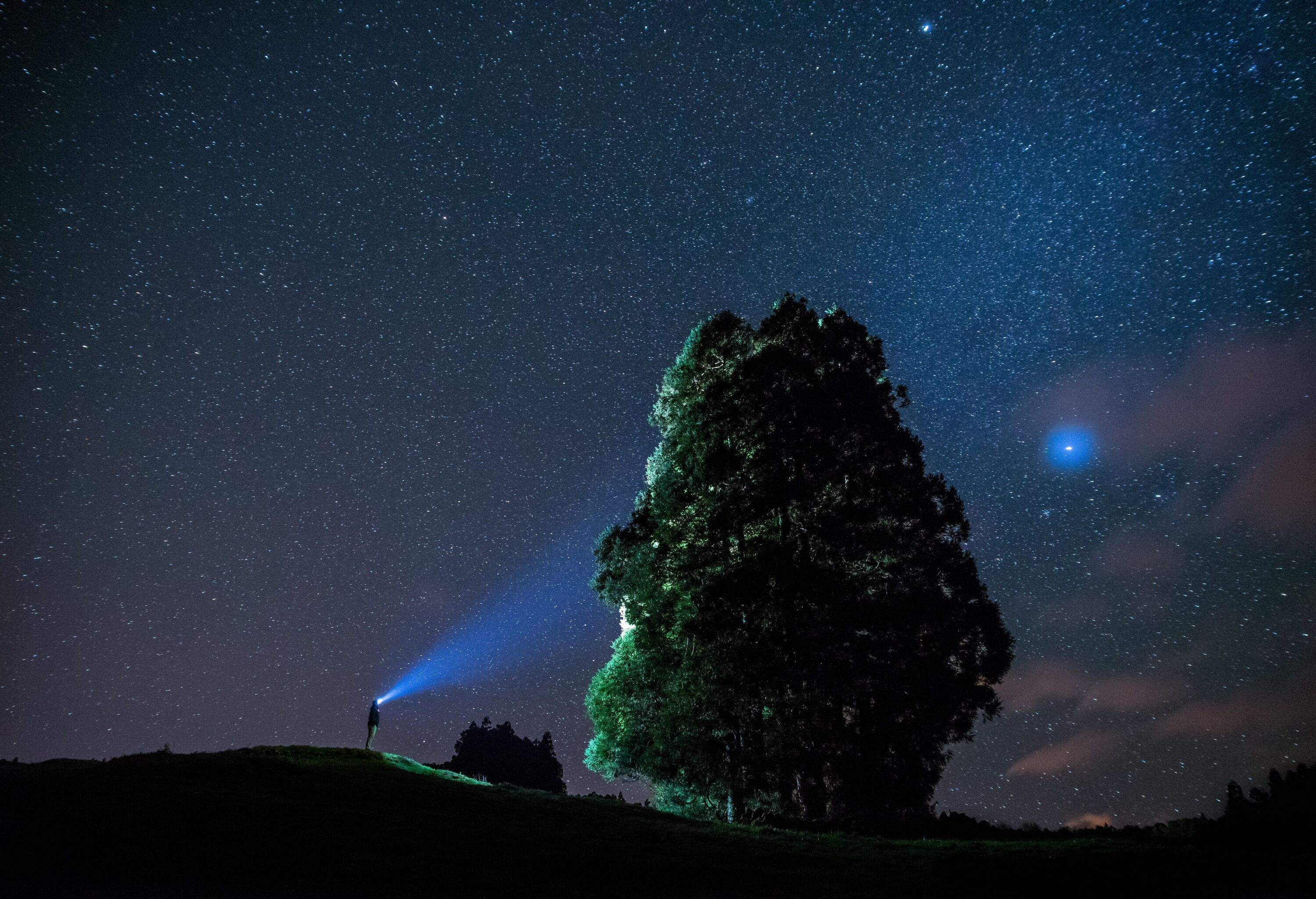
As remote as Europe gets, Portugal’s mid-Atlantic Azores archipelago is bathed in year round darkness with no major cities to pollute the night skies. This makes every island perfect for meteor spotting, although São Miguel is the most immediately accessible.
Across the island you’ll find a network of miradouros—viewpoints that make for perfect meteor watching amid stunning volcanic, coastal and lakeside settings. In August, take in the Perseids from Miradouro de Santa Iria. Watch as the constellation of Perseus rises from the horizon at dusk directly in front of you.
What should I check for before going to watch meteors?
Check the weather first—if it’s cloudy, you won’t see anything no matter how dark your surroundings. The moon can also outshine the stars, so try to plan your trip to coincide with a new moon for the darkest skies.
What should I bring to watch a meteor shower?
Bring a telescope or binoculars for close up views of the stars between meteor showers. Bring a red flashlight to preserve your night vision, and cover camera flashes and lamps with red cellophane.








